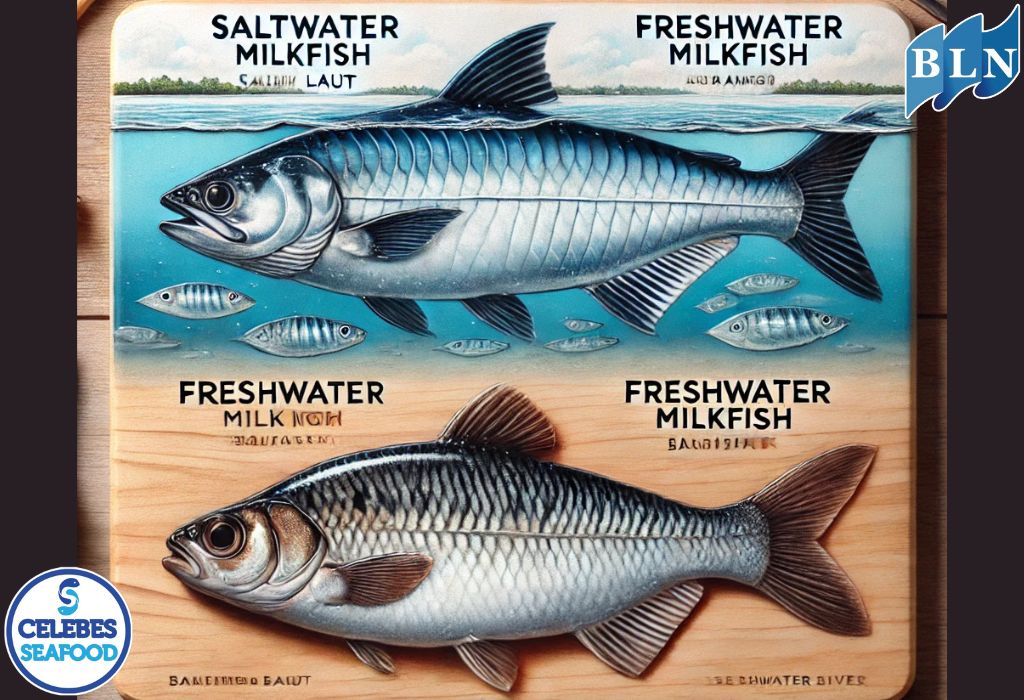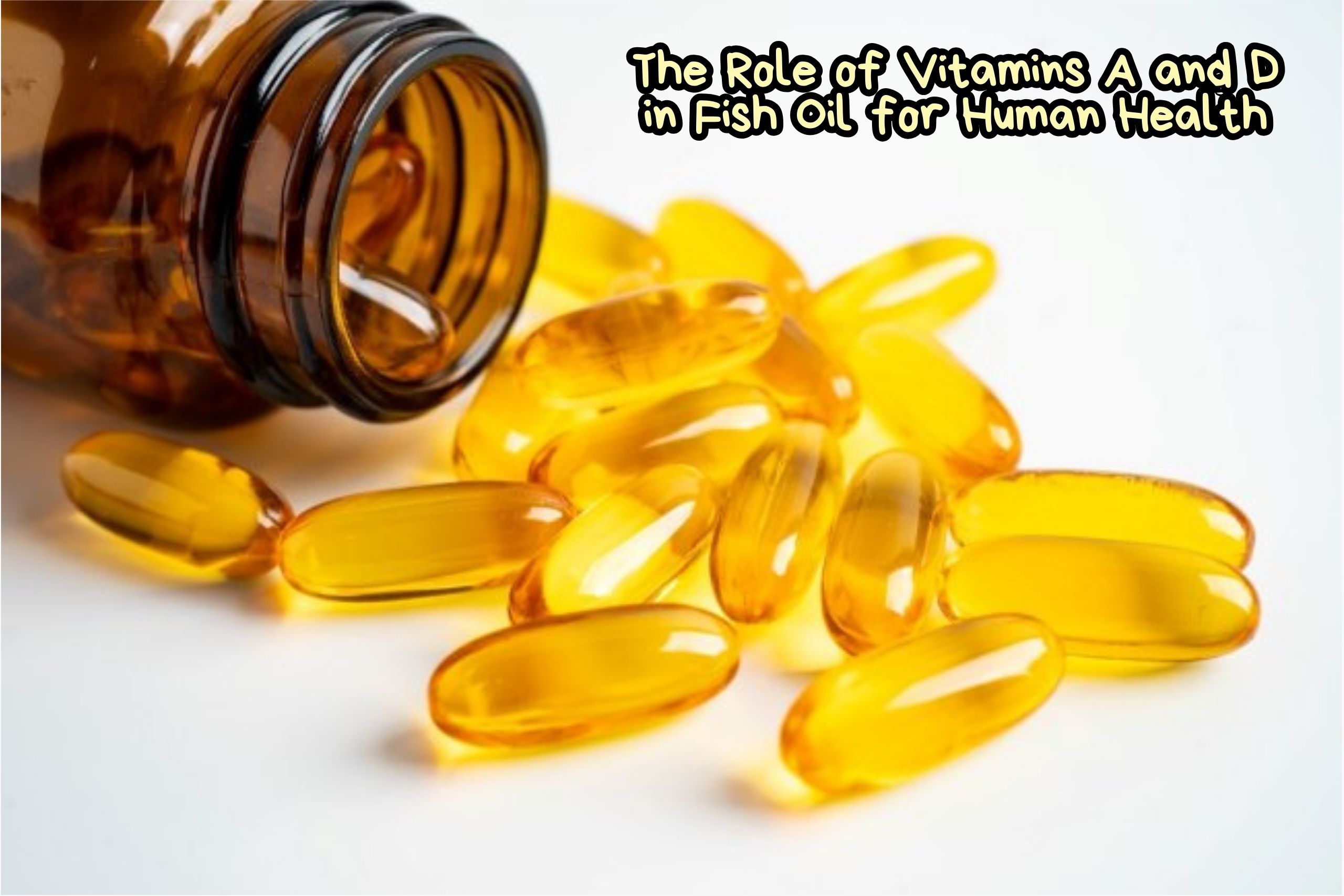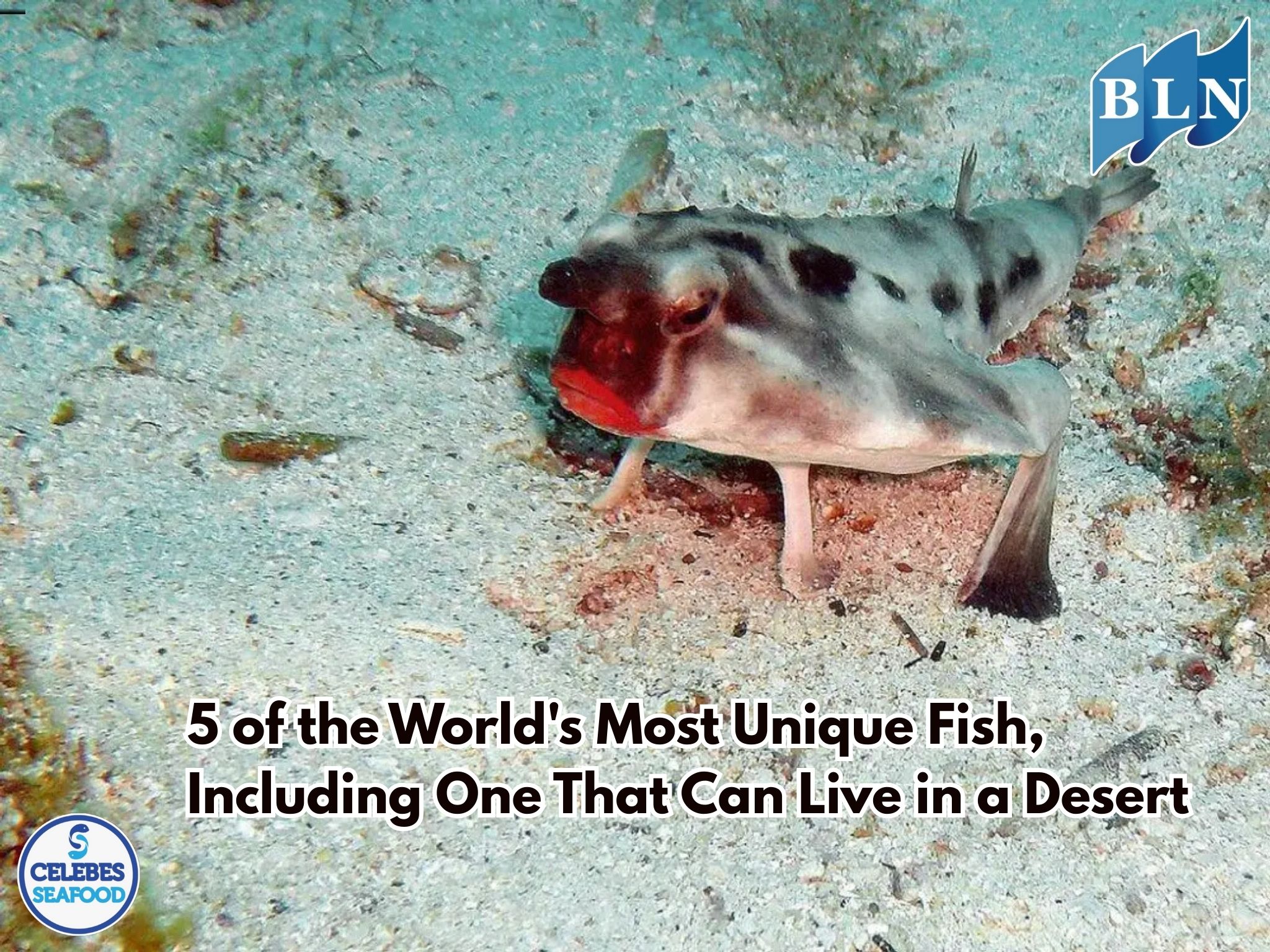Saltwater Milkfish vs. Freshwater Milkfish? What's the Difference?
By. Rani - 22 Jul 2025
lautnusantara.com Sea Milkfish vs Freshwater Milkfish, Let's Get to Know the Differences in Taste, Texture, and Nutritional Value for the Perfect Meal.
Sea or Fresh Milkfish? Know the Difference for the Perfect Meal
Let's delve into the differences between saltwater milkfish and freshwater milkfish. As culinary enthusiasts and fish connoisseurs, we often encounter both types of milkfish in the market, but we're often confused about the difference. The difference is not only in their habitat, but also in taste, texture, nutritional content, and even their selling price. Understanding this difference is important, both for those of us who want to cook milkfish at home and for those in the fisheries business. We'll discuss them in detail, from the differences in taste and texture to the cultivation methods of each, so we can all be smarter in choosing milkfish that suits our tastes and needs.
The information we present is compiled from various trusted sources, including references from the Ministry of Maritime Affairs and Fisheries (KKP) and observations from milkfish farmers on the coast of Java, especially in areas such as Demak and Jepara which are famous for their abundant milkfish harvests.
Milkfish, with the Latin name Chanos, is a fish that lives in tropical and subtropical waters. However, its cultivation has succeeded in creating two types of milkfish with different habitats, sea milkfish and freshwater milkfish. Saltwater milkfish, as the name suggests, live and are farmed in seawater, while freshwater milkfish are raised in freshwater environments, generally in ponds.
These habitat differences have a significant impact on the characteristics of fish, both physically and non-physically.We will try to dissect these differences comprehensively, so that we can easily distinguish between the two and choose the milkfish that best suits our taste.Remember, understanding these differences is not just a piece of trivia, but also the key to enjoying the deliciousness of milkfish to the fullest.
Read Also : The Delicacy of Slipper Lobster Meat: A Luxurious Alternative From the Sea
Differences between Sea Milkfish and Freshwater Milkfish
Taste and Texture
The most striking difference between sea milkfish and freshwater milkfish lies in the taste and texture.Sea milkfish that live in salty environments tend to have a more savory and slightly saltier taste. The meat is generally denser and chewier. This dense texture makes sea milkfish suitable for a variety of dishes, from frying, grilling, to pressure cooking.
The process of processing sea milkfish into a pressure cooker, for example, will produce a softer texture while still maintaining its chewiness. Meanwhile, fresh milkfish has a blander taste (as the name suggests!), although it still has the distinctive milkfish flavor.
The meat tends to be softer and slightly more tender than sea milkfish. This makes fresh milkfish more suitable for dishes that require a softer texture, such as steamed rice or soup. This difference is influenced by differences in salt and mineral levels in the environment where the fish live and develop.The higher salt content in seawater makes sea milkfish meat denser and tastier. Meanwhile, freshwater milkfish, which lives in freshwater environments with low salt content, has a softer texture.
Nutrient content
Although both are milkfish, the nutritional content of the two can differ slightly. The protein content of both is relatively similar, making them a good source of protein for the body.
However, the difference may lie in the fatty acid composition. Milkfish, which thrive in an environment rich in plankton and other marine organisms, may potentially have a higher omega-3 fatty acid content, although further research is needed to confirm the significance of this difference.
Omega-3 fatty acids are extremely beneficial for heart and brain health. Differences in mineral content may also exist, given their different habitats. Saltwater milkfish may contain certain minerals derived from seawater, such as iodine, which may differ in levels from freshwater milkfish. To obtain more accurate information regarding detailed nutritional content, we need to refer to research results and analysis data from trusted institutions such as the Ministry of Maritime Affairs and Fisheries (KKP).
Physical Appearance
Visually differentiating saltwater and freshwater milkfish can be a bit challenging for the layperson. However, there are several characteristics we can look for. In general, sea milkfish tend to have larger and longer body sizes than freshwater milkfish, although this is not always a definite benchmark.
The color of the scales can also vary slightly, sea milkfish tend to have shinier and slightly darker scales, while freshwater milkfish may have duller scales.
However, these color differences are highly relative and depend on environmental factors and the age of the fish. Therefore, distinguishing between the two based solely on physical appearance is not the most accurate method. It is better to combine visual observation with information from the seller regarding the origin and habitat of the fish.
Price
The prices of sea milkfish and freshwater milkfish usually differ. Generally, sea milkfish are slightly more expensive than freshwater milkfish.
This price difference is influenced by several factors, including: the level of cultivation difficulty (sea cultivation is more complex), market demand (sea milkfish may be more in demand because of its taste and texture) and operational costs (production costs at sea are usually higher). However, prices also depend heavily on size, quality, and location. We need to be careful when choosing milkfish, considering our tastes and budget.
If you are interested in our GOAT FISH BUTTERFLY HEAD ON, GOAT FISH BUTTERFLY SKIN ON please do not hesitate to contact us through email and/or whatsapp.








